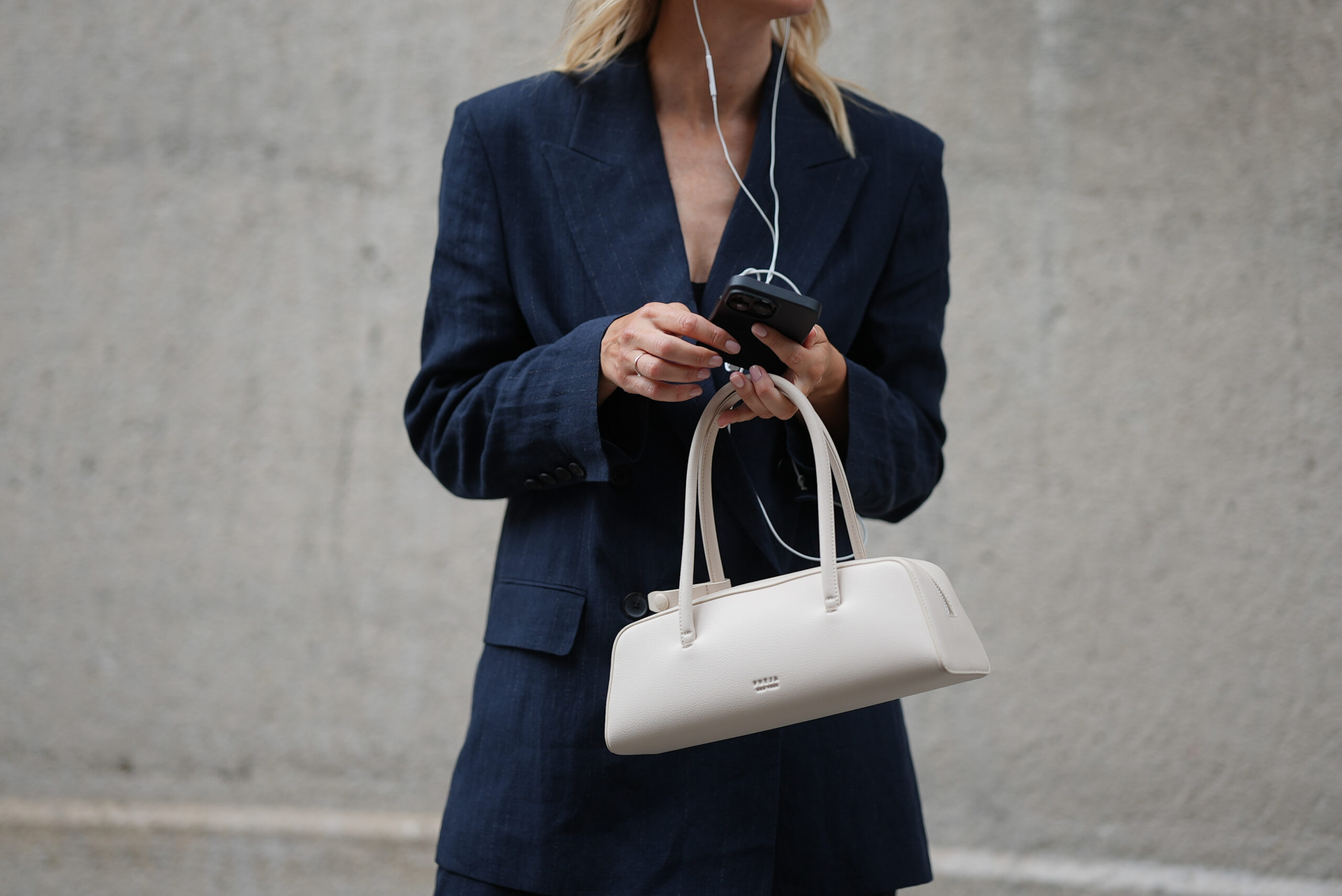The Business Case for Adaptive Fashion
January 26, 2021


As the CFDA continues its Adaptive Fashion Series with Runway of Dreams/Gamut Management, we are joined by Deborah Weinswig, CEO and Founder of Coresight Research, a research and advisory firm specializing in disruptive technologies reshaping today’s retail landscape. Weinswig examines the current Adaptive Fashion landscape and the tremendous business opportunities that this market segments holds.
What are some interesting data points that really speak to the business case for Adaptive Fashion?
In the U.S., 41 million people—12.7 percent of the population—reported having a disability in 2019, according to the U.S. Census Bureau.
Of the Americans with disabilities, 27.8 percent reported ambulatory disabilities, providing opportunities for fashion innovation around designs for seated bodies; 19 percent reported independent-living difficulty, and 10 percent reported self-care difficulty — which provide opportunities for clothing with easy fastenings and stress-free designs.
By age, consumers over 65 years old represent the most significant opportunity for adaptive fashion: 24 percent of the 65–74 age group and 47 percent of Americans aged over 75 reported having a disability in 2019. Another opportunity is presented by the 35–64 age group, with 12 percent of these consumers reporting a disability in 2019.
The most compelling point is that there are only a handful of major apparel and footwear retailers and brands that are supporting this community. Despite increasing conversations and education around disabilities and the need for adaptive apparel, brands and retailers are still slow to enter this space. Coresight Research has created a timeline of the major adaptive apparel and footwear brands and retailers supporting adaptive fashion, and it fits on one page. There is therefore an untapped opportunity for brands and retailers to penetrate the adaptive fashion market with more functional apparel and footwear for these consumers. We applaud the major retailers that have made moves to enter this space, including Kohl’s, NIKE, Target, Tommy Hilfiger and Zappos Adaptive, as well as independent brands.
As more retailers and brands target the adaptive fashion market, we expect others to follow suit.
In your opinion, with Adaptive Fashion being a multibillion-dollar market, why have most brands not ventured into this space?
The biggest obstacle is education. The opportunity is broad, and brands may not know where or to which consumers to focus their efforts. The adaptive fashion target market encompasses different types of individuals: those with sensory issues who prefer clothing without tags or seams; individuals with dexterity issues that cannot button their shirts or pants and so require special fastenings; and individuals who require functional and fashionable clothing that is adapted for wearing in a wheelchair. Additionally, education and data are necessary to help dispel any preconceived notions or stereotypes, serving to inform retailers and brands about consumers’ spending power, education and fashion preferences. This education helps to identify the types of products that consumers are seeking, how individuals with disabilities want to be communicated to, and how these preferences may differ by age group. Educating brands on adaptive fashion has been one barrier to market entry because just like any other white-space opportunity, understanding the consumer is essential to venturing into the category.
Secondly, adaptive fashion products require consumer-centric design—for example, designs specifically suited for seated bodies (for wheelchair users). This is typically challenging as it requires technical expertise, although digital design is accelerating the speed at which patterns can be adapted and modified for varied use cases. In the healthcare segment, there is opportunity for functional fashion designs for individuals with illnesses or undergoing treatment. In one brand collaboration, Care + Wear partnered with Oscar de la Renta to design fashionable clothing for people undergoing chemotherapy treatment with apparel that supports port access so the patient does not have to disrobe. Care + Wear has also designed organic preemie NICU gowns with easy fastenings, so that doctors do not have to disrobe the baby to gain access to IV and PICC lines.
Entering the adaptive fashion market requires a commitment from leadership that it is an area of focus for the long term. The market is often compared to the extended-size apparel sector as it was just beginning. There were few brands and retailers that were catering to the needs of the extended-size population, even though the need was there. Adaptive fashion is similar, but the opportunities are more specialized because there are different segments with different needs. However, there are many opportunities for brands to find a niche in which to grow.
What type of research are you performing right now to help advance the conversation on Adaptive Fashion?
Since 2018, Coresight Research has been learning about the adaptive consumer and engaging with the retail industry about the adaptive apparel and footwear market. A couple of years ago, “adaptive” was not even a well-known term. Our aim was, and still is, to educate retailers and brands on the opportunity to develop products for this underserved population.
In June 2018, we held a half-day conference entitled “One Size Does Not Fit All” with Alvanon, a technology and solutions provider in the apparel market, on inclusive sizing and adaptive fashion. The conference was standing room only; we were overwhelmed by the industry’s interest.
In 2020, we collaborated with the New York City Mayor’s Office for People with Disabilities to understand the disability community across the U.S., and we participated in a series of webinars with field representatives in major cities. We educated our audience and advanced the conversation on disabilities (and the impact of Covid-19) as part of the ADA anniversary in July in our report, Americans with Disabilities Act Celebrates 30 Years – Opportunities Still Exist for Inclusion, Education and Adaptive Apparel.
Our current research efforts include topical research reports and Think Tank reports on adaptive apparel. In 2021, inclusivity is one of Coresight Research’s major themes for the year. We will be covering inclusivity, diversity and adaptive apparel in our research all year round. In the summer this year, we are planning AdaptaCon, a conference featuring panel discussions from adaptive industry leaders. Stay tuned for details!
What do you see as the greatest opportunities for brands who are considering entering this market?
There are very few brands and retailers providing functional and fashionable apparel for consumers with disabilities. The two biggest areas of white-space opportunity in the U.S., in terms of need by age and category, are as follows:
- Consumers aged over 65 comprise the greatest opportunity—with 24 percent of individuals aged 65–74 and 47 percent of the 75+ age group reporting a disability in 2019—followed by the 35–64 age group, with 12 percent of these consumers reporting a disability.
- By need, people with ambulatory disabilities represent a significant opportunity, with 7 percent of the total U.S. population reporting ambulatory difficulty in 2019. Consumers with self-care and independent-living difficulties also represent a key target market for adaptive fashion, with 2.6 percent and 6 percent of all Americans reporting these difficulties, respectively. For those with ambulatory difficulty, there are opportunities for specialized designs: high-rise pants with slimmer-fit legs to increase comfort and accommodate for less developed leg muscles; shirts and jackets for seated bodies—with a shorter front and longer back, more width at the shoulders and fitted sleeves to prevent the material from getting caught in wheelchair wheels. For individuals with independent and self-care difficulties, potential design solutions include stress-free apparel with simple fastenings for easy dressing.
- The healthcare segment represents a tremendous opportunity to help to serve those who have a chronic illness or are recovering from an illness. Providing fashionable designs that allow consumers a dignified experience when undergoing medical treatment is one example—adaptive fashion can facilitate IV hookups, ports and insulin pumps.
Join us for the upcoming webinar, by registering below.
Learning From The Researchers | January 28 @ 12PM EDT
Learning From The Innovators | February 4 @ 12PM EDT

